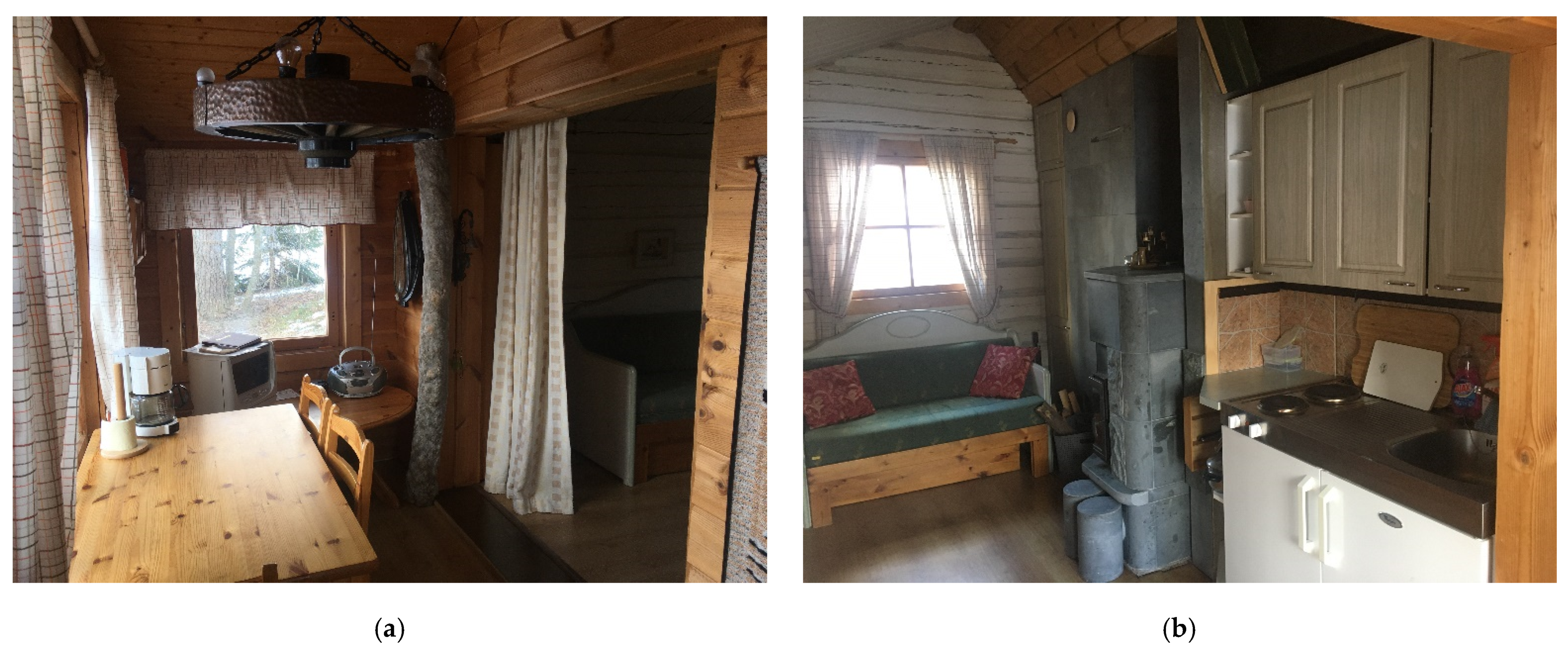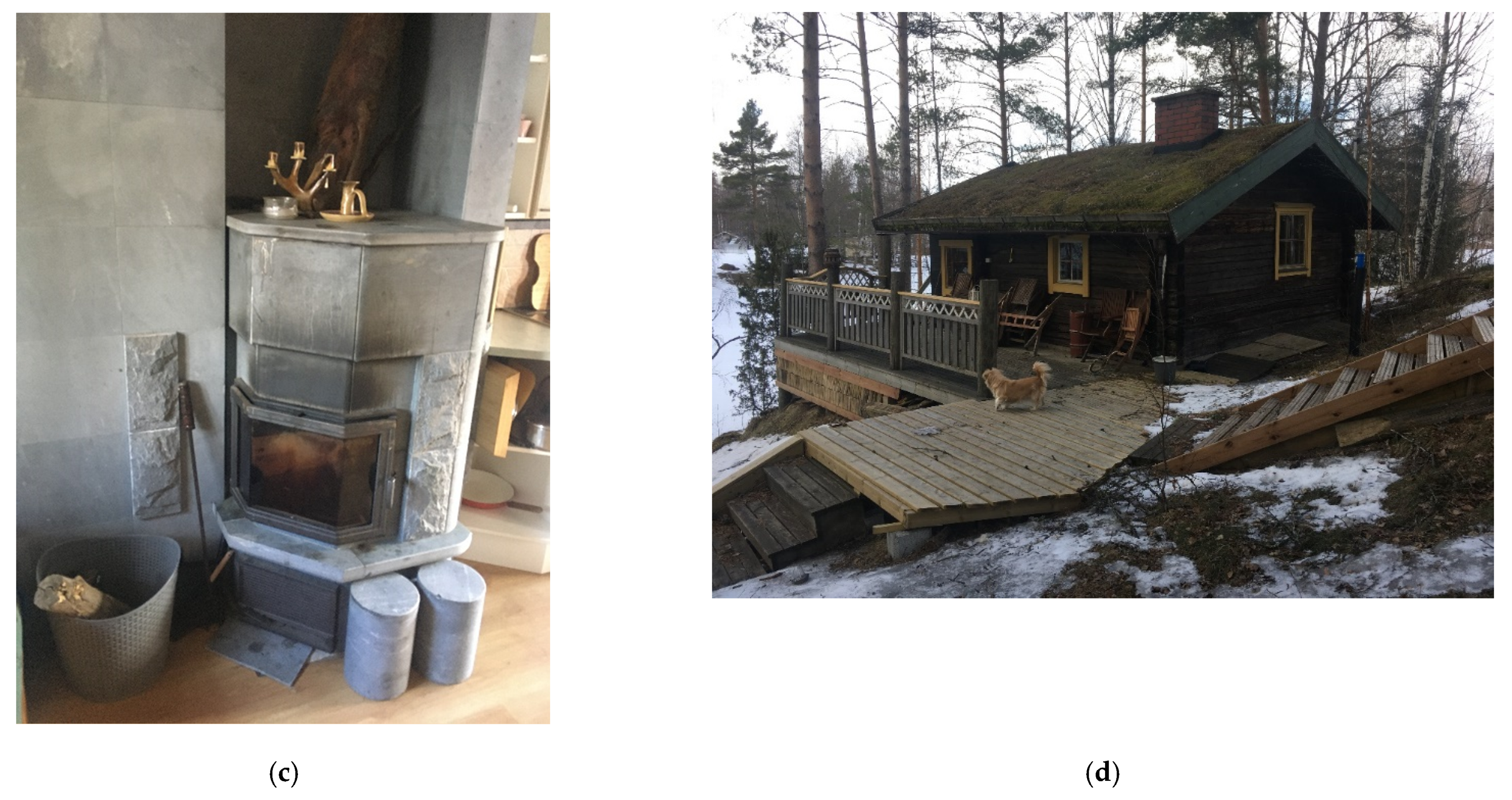This entry provides an understanding of the past, present, and future of the Finnish cottage culture to create an overall picture of its development trajectory and its terminology, e.g., villa, in this context denoting a second home. Convenient, ready-made solutions, easy maintenance, a high level of equipment, year-round use, location, and modern and simple architectural styles are important selection criteria for (summer) cottages that belonged only to the wealthy bourgeois class in the 19th century and have taken their present form with a major transformation in Finland since then. Additionally, municipal regulations and increased attention to ecological concerns are other important issues regarding the cottage today. Cottage inheritance has changed over the generations, and the tightening of building regulations and increased environmental awareness are key drivers of the future transformation of cottage culture. Moreover, the increasing demand for single-family and outdoor spaces created by social changes such as remote working, which has become widespread with the COVID-19 pandemic, will make the summer cottage lifestyle even more popular in Finland. It is thought that this entry will contribute to the continuance of the Finnish cottage culture, which is essential for the vitality of countryside municipalities, local development, national culture, and the well-being of Finnish people.
- (summer) cottage
- second home
- (summer) villa
- holiday home
- Finland




References
- Coppock, J.T. (Ed.) Second Homes: Curse or Blessing? Pergamon: Oxford, UK, 1977.
- Eriksen, T.H. Second Homes in the Nordics. Available online: https://nordics.info/show/artikel/second-homes-in-the-nordics#:~:text=Second%20homes%20are%20used%20as,and%20an%20abundance%20of%20space (accessed on 10 March 2022).
- Müller, D.K. Second Homes in the Nordic Countries: Between Common Heritage and Exclusive Commodity. Scand. J. Hosp. Tour. 2007, 7, 193–201.
- Müller, D.K. Reinventing the countryside: German second-home owners in Southern Sweden. Curr. Issues Tour. 2002, 5, 426–446.
- Hall, C.M.; Müller, D.K.; Saarinen, J. Nordic Tourism; Issues and Cases; Channel View Publications: Bristol, UK, 2009.
- Reijo, M. Suomalaisilla käytössä kakkosasuntoja useimmin EU: N alueella. Hyvinvointikatsaus 2002, 2, 20–23. (In Finnish)
- Jetsonen, J.; Jetsonen, S. Finnish Summer Houses; Princeton Architectural Press: New York, NY, USA, 2008.
- Pitkänen, K.; Kokki, R. Publications of the Savonlinna Institute for Regional Development and Research No. 11, Non-Faculty Institutes, Savonlinna Centre for Continuing Education and Regional Development, University of Joensuu Publications. 2005. Available online: https://erepo.uef.fi/bitstream/handle/123456789/8449/urn_isbn_952-458-701-7.pdf?sequence=1&isAllowed=y (accessed on 10 March 2022). (In Finnish).
- Concepts and Definitions, Statistics Finland. Available online: https://www.stat.fi/til/rakke/kas_en.html (accessed on 10 March 2022).
- Vepsäläinen, M.; Pitkänen, K. Second home countryside: Representations of the rural in Finnish popular discourses. J. Rural. Stud. 2010, 26, 194–204.
- Hiltunen, M.J.; Pitkänen, K.; Vepsäläinen, M.; Hall, C.M. Second home tourism in Finland: Current trends and eco-social impacts. In Second Home Tourism in Europe: Lifestyle Issues and Policy Responses; Roca, Z., Ed.; Ashgate: Farnham, UK, 2013; pp. 165–198.
- Pitkänen, K.; Puhakka, R.; Semi, J.; Hall, C.M. Generation Y and second homes: Continuity and change in Finnish outdoor recreation. Tour. Rev. Int. 2014, 18, 207–221.
- Adamiak, C.; Vepsäläinen, M.; Strandell, A.; Hiltunen, M.J.; Pitkänen, K.; Hall, C.H.; Rinne, J.; Hannonen, O.; Paloniemi, R.; Åkerlund, U. Second Home Tourism in Finland Perceptions of Citizens and Municipalities on the State and Development of Second Home Tourism; Finnish Environment Institute Publications: Helsinki, Finland, 2015.
- Hiltunen, M.J. Environmental impacts of rural second home tourism–Case Lake district in Finland. Scand. J. Hosp. Tour. 2007, 7, 243–265.
- Casado-Diaz, M.A. Socio-demographic impacts of residential tourism: A case study of Torrevieja, Spain. Int. J. Tour. Res. 1999, 1, 223–237.
- Mottiar, Z.; Quinn, B. Shaping leisure/tourism places–The role of holiday homeowners: A case study of Courtown, Co. Wexford, Ireland. Leis. Stud. 2003, 22, 109–127.
- Hall, C.M.; Müller, D.K. (Eds.) Tourism, Mobility and Second Homes: Between Elite Landscape and Common Ground; Channel View Publications: Clevedon, UK, 2004.
- McIntyre, N.; Williams, D.R.; McHugh, K.E. (Eds.) Multiple Dwelling and Tourism: Negotiating Place, Home and Identity; Cabi: Wallingford, UK, 2006.
- Marjavaara, R. Second Home Tourism: The Root to Displacement in Sweden. Gerum 2008: 1; Department of Social and Economic Geography, Umeå University: Umeå, Sweden, 2008.
- Karisto, A. Kesämökki ja arjen ympäristöpolitiikka. In Arkielämän Ympäristöpolitiikka; Massa, I., Ahonen, S., Eds.; Gaudeamus: Helsinki, Finland, 2006; pp. 122–137.
- OSF. Official Statistics of Finland. Kotitalouksien Käytettävissä Olevat Rahatulot Vuonna 2011. 2013. Available online: http://www.stat.fi/til/tjt/2011/03/tjt_2011_03_2013-04-10_kat_001_fi.html>28.6.2013 (accessed on 10 March 2022).
- Free-Time Residences 2018, Statistics Finland. Available online: https://www.stat.fi/til/rakke/2018/rakke_2018_2019-05-21_kat_001_en.html (accessed on 10 March 2022).
- Finnish Industrial Wastewater Guide, Conveying Non-Domestic Wastewater to Sewers Publication Series No. 69; The Finnish Water Utilities Association: Helsinki, Finland, 2018; Available online: https://www.vvy.fi/site/assets/files/1110/finnish_industrial_wastewater_guide.pdf (accessed on 10 March 2022).
- Laapotti, S. Wood Is a Sustainable Building Material–But There Is a Money Problem to Solve, Unit Magazine, Tampere University. Available online: https://www.tuni.fi/unit-magazine/en/articles/wood-sustainable-building-material-there-money-problem-solve (accessed on 10 March 2022).
- The Finnish Timber Council (Puuinfo). Available online: http://www.puuinfo.fi/puutieto (accessed on 10 March 2022).
- Karjalainen, M.; Ilgın, H.E. The Change over Time in Finnish Residents’ Attitudes towards Multi–Story Timber Apartment Buildings. Sustainability 2021, 13, 5501.
- Karjalainen, M.; Ilgın, H.E.; Metsäranta, L.; Norvasuo, M. Suburban Residents’ Preferences for Livable Residential Area in Finland. Sustainability 2021, 13, 11841.
- Ilgın, H.E.; Karjalainen, M. Perceptions, Attitudes, and Interest of Architects in the Use of Engineered Wood Products for Construction: A Review; IntechOpen: London, UK, 2021.
- Karjalainen, M.; Ilgın, H.E.; Metsäranta, L.; Norvasuo, M. Wooden Facade Renovation and Additional Floor Construction for Suburban Development in Finland; IntechOpen: London, UK, 2022.
- Karjalainen, M.; Ilgın, H.E.; Metsäranta, L.; Norvasuo, M. Residents’ Attitudes towards Wooden Facade Renovation and Additional Floor Construction in Finland. Int. J. Environ. Res. Public Health 2021, 18, 12316.
- Rinne, R.; Ilgın, H.E.; Karjalainen, M. Comparative Study on Life-Cycle Assessment and Carbon Footprint of Hybrid, Concrete and Timber Apartment Buildings in Finland. Int. J. Environ. Res. Public Health 2022, 19, 774.
- Ilgın, H.E.; Karjalainen, M. Preliminary Design Proposals for Dovetail Wood Board Elements in Multi-Story Building Construction. Architecture 2021, 1, 56–68.
- Karjalainen, M.; Ilgın, H.E.; Somelar, D. Wooden Additional Floors in old Apartment Buildings: Perspectives of Housing and Real Estate Companies from Finland. Buildings 2021, 11, 316.
- Ilgın, H.E.; Karjalainen, M.; Koponen, O. Review of the Current State-of-the-Art of Dovetail Massive Wood Elements; IntechOpen: London, UK, 2021.
- Karjalainen, M.; Ilgın, H.E.; Tulonen, L. Main Design Considerations and Prospects of Contemporary Tall Timber Apartment Buildings: Views of Key Professionals from Finland. Sustainability 2021, 13, 6593.
- Tulonen, L.; Karjalainen, M.; Ilgın, H.E. Tall Wooden Residential Buildings in Finland: What Are the Key Factors for Design and Implementation? IntechOpen: London, UK, 2021.
- Karjalainen, M.; Ilgın, H.E.; Yli-Äyhö, M.; Soikkeli, A. Complementary Building Concept: Wooden Apartment Building: The Noppa toward Zero Energy Building Approach; IntechOpen: London, UK, 2021.
- Ilgın, H.E.; Karjalainen, M.; Koponen, O. Various Geometric Configuration Proposals for Dovetail Wooden Horizontal Structural Members in Multistory Building Construction; IntechOpen: London, UK, 2022.
- Karjalainen, M.; Ilgın, H.E.; Somelar, D. Wooden Extra Stories in Concrete Block of Flats in Finland as an Ecologically Sensitive Engineering Solution, Ecological Engineering–Addressing Climate Challenges and Risks; IntechOpen: London, UK, 2021.
- Ilgın, H.E.; Karjalainen, M.; Koponen, O. Dovetail Massive Wood Board Elements for Multi-Story Buildings. In Proceedings of the LIVENARCH VII Livable Environments & Architecture 7th International Congress OTHER ARCHITECT/URE(S), Trabzon, Turkey, 28–30 September 2021; Volume I, pp. 47–60.
- Karjalainen, M.; Ilgın, H.E. A Statistical Study on Multi-story Timber Residential Buildings (1995–2020) in Finland. In Proceedings of the LIVENARCH VII Livable Environments & Architecture 7th International Congress OTHER ARCHITECT/URE(S), Trabzon, Turkey, 28–30 September 2021; Volume I, pp. 82–94.
- Ilgın, H.E.; Karjalainen, M.; Koponen, O.; Soikkeli, A. A Study on Contractors’ Perception of Using Wood for Construction; IntechOpen: London, UK, 2022.
- Soikkeli, A.; Ilgın, H.E.; Karjalainen, M. Wooden Additional Floor in Finland. Encyclopedia 2022, 2, 578–592.
- Polina, I. The Designing, Construction, and Maintenance of Honka Log Houses. Guidelines for Russian Customers. Master’s Thesis, Lappeenranta Degree Program in Civil and Construction Engineering, Saimaa University of Applied Sciences Technology, South Karelia, Finland, 2010.
- Poortinga, W.; Bird, N.; Hallingberg, B.; Phillips, R.; Williams, D. The role of perceived public and private green space in subjective health and wellbeing during and after the first peak of the COVID-19 outbreak. Landsc. Urban Plan. 2021, 211, 104092.
- Kraatari, E. Finnish Cottage Industry and Cultural Policy: A Historical View. Nord. Kult. Tidskr. 2013, 16, 137–152.
